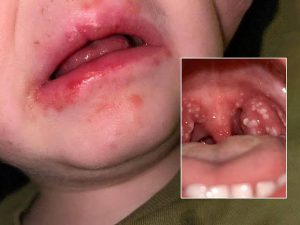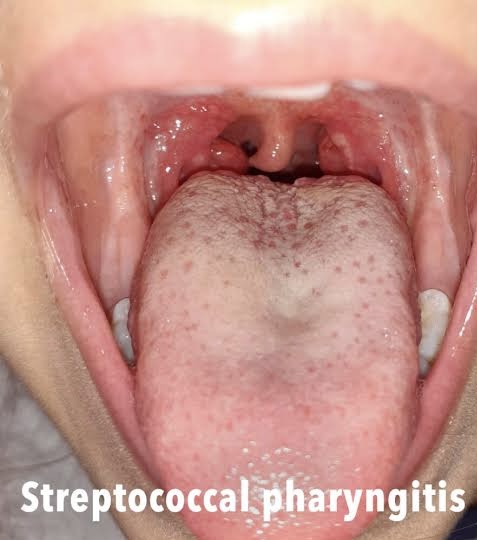As I stood in the doctor’s office, I felt the words “Streptococcal Pharyngitis” echo through my mind like a thunderbolt. My throat, once a vital instrument for singing and laughter, had become a battleground. The enemy, a stealthy bacterium, had infiltrated my tonsils, leaving me weak and helpless. But I refused to surrender. I knew that with the right weapons – antibiotics and determination – I could defeat this invader and reclaim my voice.
The days that followed were a blur of medication, rest, and resilience. I sipped on warm tea, feeling the soothing liquid coat my throat like a comforting embrace. I devoured books and movies, fueling my mind with stories of triumph and courage. And as the bacteria began to retreat, I felt my strength return, my voice slowly rising from the ashes like a phoenix. I was determined to emerge from this battle scarred but stronger, my throat a testament to the power of hope and perseverance.
As I finally began to recover, I realized that “Throat Thunderbolt” was not just a diagnosis, but a symbol of my inner strength. I had faced the storm and emerged victorious, my voice now a powerful tool for inspiring others. I began to sing again, my melodies a reflection of my journey – raw, emotional, and triumphant. And as I belted out my favorite tunes, I knew that I had truly defeated the enemy, my throat thundering with a newfound appreciation for life.
What is Streptococcal Pharyngitis?

Streptococcal pharyngitis, also known as strep throat, is a bacterial infection caused by Group A Streptococcus (GAS) that affects the throat and tonsils. It is a common illness that occurs most often in children between the ages of 5 and 15.
Types
1. Classic strep throat: The most common type, characterized by sudden onset of sore throat, fever, and white patches on the tonsils.
2. Mild strep throat: A less severe version with milder symptoms.
3. Complicated strep throat: Accompanied by additional symptoms like swollen lymph nodes, difficulty swallowing, or a rash.
4. Recurrent strep throat: When the infection returns despite treatment.
5. Strep throat with tonsillitis: Inflammation of the tonsils.
6. Strep throat with mononucleosis (Mono): A coinfection with the Epstein-Barr virus.
7. Strep throat with a rash (Scarlet fever): A rare complication characterized by a distinctive rash.
8. Peritonsillar abscess: A collection of pus near the tonsils.
9. Retropharyngeal abscess: An abscess behind the throat.
10. Lemierre’s syndrome: A rare complication with bloodstream infection and internal jugular vein thrombosis.
It’s important to consult a healthcare professional for accurate diagnosis and treatment, as some types may require more aggressive management.
Causes
1. Group A Streptococcus (GAS) bacteria
2. Close contact with an infected person
3. Touching someone who has strep throat
4. Sharing drinks or food with someone who has strep throat
5. Breathing in the bacteria when an infected person coughs or sneezes
6. Poor hygiene
7. Crowded living conditions
8. Age (most common in children between 5 and 15)
9. Weakened immune system
10. Previous strep throat infections
11. Certain medications (e.g., chemotherapy drugs)
12. Hormonal changes (e.g., pregnancy, menstruation)
13. Smoking or secondhand smoke exposure
14. Inadequate ventilation
15. Poor air quality
16. Inadequate food handling and preparation
17. Unclean water sources
18. Close contact with someone who has a skin infection (e.g., impetigo)
19. Sharing personal items (e.g., towels, razors)
20. Inadequate handwashing or hand sanitizer use
Keep in mind that some of these causes may be more significant than others, and some may be interrelated (e.g., poor hygiene and inadequate handwashing).
Signs and symptoms
1. Sudden onset of sore throat
2. Severe pain or difficulty swallowing
3. Swollen and tender lymph nodes in the neck
4. White or red patches on the tonsils
5. Fever (usually high)
6. General feeling of illness or malaise
7. Nausea or vomiting
8. Headache
9. Body aches
10. Swollen and red tonsils
11. Difficulty opening the mouth (in severe cases)
12. Drooling (in severe cases)
13. Loss of appetite
14. Sore or tender jaw
15. Rash (in some cases)
It’s important to note that some people may not exhibit all of these symptoms, and the severity of the infection can vary from person to person. If you suspect you or your child may have strep throat, it’s essential to consult a healthcare professional for an accurate diagnosis and appropriate treatment.
Prevention
1. Practice good hygiene:
– Wash hands frequently with soap and water.
– Use hand sanitizer when soap and water are not available.
2. Avoid close contact with someone who has strep throat.
3. Avoid sharing:
– Drinks
– Food
– Utensils
– Personal items (e.g., towels, razors)
4. Cover mouth and nose when coughing or sneezing.
5. Keep surfaces clean:
– Regularly disinfect high-touch areas (e.g., doorknobs, light switches)
6. Avoid sharing food or drinks with someone who has strep throat.
7. Stay hydrated:
– Drink plenty of water
– Avoid sugary drinks
8. Get enough sleep:
– Aim for 8-10 hours of sleep per night
9. Manage stress:
– Practice stress-reducing techniques (e.g., meditation, deep breathing)
10. Keep your immune system strong:
– Eat a balanced diet
– Exercise regularly
– Avoid smoking and limit alcohol consumption
11. Consider getting a strep throat vaccine (if available)
12. Practice good oral hygiene:
– Brush teeth regularly
– Floss daily
– Use a tongue scraper
By following these prevention measures, you can reduce your risk of getting strep throat. However, if you do get strep throat, early treatment can help alleviate symptoms and prevent complications.
Treatment
1. Antibiotics:
– Penicillin (such as amoxicillin or penicillin VK) or
– Macrolides (such as azithromycin or clarithromycin)
2. Pain relief:
– Acetaminophen (such as Tylenol) or
– Ibuprofen (such as Advil or Motrin)
3. Rest and hydration:
– Plenty of fluids (water, soup, or electrolyte-rich drinks like Pedialyte)
4. Home remedies:
– Saltwater gargle
– Warm compresses on the throat
– Humidifier to soothe the throat
5. Throat lozenges or sprays:
– Containing ingredients like phenol or menthol to numb the throat
6. Steroids (in some cases):
– To reduce swelling and inflammation
It’s essential to complete the full course of antibiotics (usually 10 days) to ensure the infection is fully cleared. Rest, hydration, and pain relief can help manage symptoms. If you have a severe case or complications, your healthcare provider may prescribe additional treatments.
Remember, always consult a healthcare professional for an accurate diagnosis and appropriate treatment plan.

